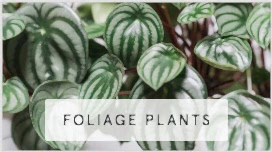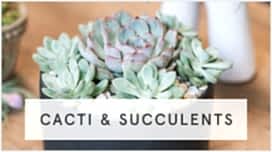Fertilizer 101: What's Best for Your Spring Garden?

Fertilizer 101: What's Best for Your Spring Garden?
Growing a spring garden offers plenty of benefits for your total health. While gardening is a stress-relieving activity, you can also grow fresh, nutritious food right in your backyard. The taste of fresh food is unparalleled. Your garden’s food won't spend a long time in transit ripening in a truck but instead will fully mature right until harvest time. This ensures the most authentic taste and highest nutrition possible for all your homegrown veggies.
To get the most out of your spring garden, you need to use the right type of fertilizer for your crops. Though different plants have varying needs, most need some amounts of nitrogen, potassium, and phosphorus to grow. Nitrogen is particularly important and a vital part of a fertilizer mix since it’s required for photosynthesis. This guide will help you learn how to fertilize your spring garden correctly.
The Benefits of a Spring Garden
Cultivating your own garden is a win-win for you and the environment. Having access to fresh food and herbs is convenient and saves money while reducing your carbon footprint. Instead of driving to the store, you can harvest delicious tomatoes, beans, and lettuce right from your garden beds. At the same time, you can relieve stress and gain a sense of accomplishment from growing your own herbs and vegetables. The task of watering, weeding, and planting new crops is simple and relaxing, helping gardeners recharge after a stressful workday. You can also start your weekend off great with some routine garden care.
Gardening is also a terrific way to bring your family together. When everyone gets a chance to cultivate a fruitful garden, meals become more meaningful. It is a team effort for the household and a great way to achieve a goal together. So how can you fertilize your home garden correctly in the spring so that you get the best returns for your efforts? This guide will explain when to fertilize your garden, the type of fertilizers you need, and how to adapt your methods if you plan to grow your garden indoors.
When to Fertilize
For all soil types, gardens should get an average of 1-2 fertilizer applications during the growing season. However, when, how much, and how often you must fertilize depends on your soil type and where you live. If you have soil with plenty of organic matter, such as a garden bed that you have continually nourished with compost, it just needs some additional fertilizer right before planting. Then, it needs a refresh with small fertilizer applications every 3-4 weeks. Do not fertilize too early when the soil is already nutritious!
If you have clay soil, you should optimize its composition long before the spring. When soil contains too much clay, it can have compaction and drainage problems. However, you can fix these problems by adding food compost, composted leaves, gypsum, and pine bark into the mix. You can start this process in the fall and then refresh the garden bed in the spring right before planting. For clay soil, you should apply fertilizer every 4-6 weeks after planting.
In the winter, plants don’t need as much fertilizer — or any at all. Any plants that normally go dormant in the winter naturally go into a state that requires fewer nutrients. Therefore, you don’t need to fertilize most shrubs, lawns, perennials, hardy trees, and ground covers. If you have some winter crops that will grow during this season, follow the plant’s specific care needs. Then, when spring is on the horizon, you can begin your yard and garden prep once more with a round of aeration, weed control, and fertilization.
What Type of Fertilizer Do You Need?
New gardeners have a lot of questions, especially about planting times and when to apply fresh potting soil and chemicals like fertilizer. There are many types of soil and fertilizers out there, so it can be confusing to a novice gardener. Typically, fertilizers are labeled with three numbers, like 10-5-10. The first number refers to the percentage of nitrogen in the bag. The second figure is how much percentage of the bag phosphorus takes up, and the third is the percentage of potassium.
Overall, most gardeners lean toward using complete fertilizers with twice the amount of phosphorus as nitrogen or potassium, such as a 10-20-10 or 5-10-5. The type of fertilizer you need depends on the kind of soil you need to enhance. For example, soil nourished with compost already may have enough potassium for plant growth. In this case, you can opt for a fertilizer with nitrogen and phosphorus only.
Different types of vegetables thrive on different kinds of fertilizers — before and after planting. For the most part, if you have your hands on 5-10-10 and 10-10-10 fertilizer, you should be able to nourish the most popular vegetables. Sometimes you will have vegetables with unique needs like asparagus, which needs compost and bone meal mixed in the soil before planting, and then 10-10-10 fertilizer applied throughout the spring. On the other hand, beans need a 5-10-10 fertilizer placed in the soil before planting and boosts of the same fertilizer after planting to sustain their growth. It’s important to do your research to get the right type of fertilizer for your crops after you plan your garden so that you get the best results.
What About Compost?
If you want to go the natural route and take care of your organic waste, then composting is a great option for you. It’s one of the most eco-friendly and affordable ways to add more organic matter to your soil and reduce methane emissions from landfills. You may choose to start a compost heap outside near your garden or use a convenient countertop composter. But however you decide, you will still get great results.
While starting the compost heap involves a decent initial investment, you get infinite returns in organic material for your garden. This reduces your need to go to the store for fertilizer and your carbon footprint. But before you try to rely on compost alone, research your crops and see if they need additional fertilizer using organic materials in the soil. Since different vegetables and herbs have various nutritional needs, you may need to keep some fertilizer on hand to give your garden a boost.
What About Pests?
Pests and plant diseases are a legitimate threat to your garden. After fertilization and planting seeds, you should also make sure you prevent bug or fungal infestations. Thankfully, properly setting up your garden with nutritious, aerated soil is a good start. Here are some other ways to keep pests away from your garden:
● Water early in the morning. Damp leaves attract pests at night.
● Weed your garden regularly to remove places for bugs to hide.
● Clean out any dead plants and waste that can grow fungus, which causes plant disease.
● Take out weak-looking plants, which are more likely to attract pests.
● Attract beneficial insects like ladybugs to your garden. They eat common pests like aphids and mites that snack on crops.
● Use a mesh cover to keep away bigger snackers at night. Nocturnal creatures like rabbits love to munch on vegetables while you’re fast asleep. However, netting will keep them at bay without harming them.
● If you plan on starting your garden early, use a greenhouse to protect your plants from frost at night.
Growing an Indoor or Balcony Garden
If you prefer to keep your spring garden indoors or on your balcony, you can follow similar gardening steps. You won’t have to change too much about your method as your main focus will be to make sure your garden gets enough nourishment, light, and moisture. Here’s what you need:
Potting Soil: Since you will need to use potting soil, your fertilization tasks will be simpler because they are already optimized to nourish your vegetables.
Grow Lights or a South-Facing Window: Either of these light sources will give an indoor garden enough time to photosynthesize.
Watering Can or Mister: Use to apply the recommended amount of hydration in the morning.
A Planting Bed/Pottery and Saucers: Make sure there is enough planting space to fulfill your gardening plans.
What about fertilizer for an indoor garden? For indoor plants, experts recommend applying a slow-release fertilizer at the beginning of the seed’s growth period. Liquid fertilizer is also effective, but it doesn’t last as long. If you plan to use your garden yearly, make sure to also flush out your pots and garden beds after the planting season is over.
Shop Green Plants, Garden Essentials, Gifts and More
If you want even more green in your home, create some living spaces with pre-grown, potted houseplants delivered to your door. Whether you want to spruce up a room with a hanging air plant or place a tall shrub in your home office, we have what you need. You can also shop for potting soil and other plant-boosting products to make your indoor and outdoor oases thrive. For more information, contact one of us at PlantShed today!












